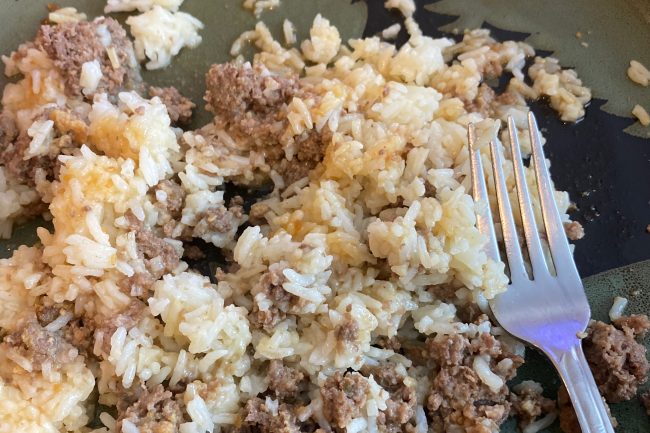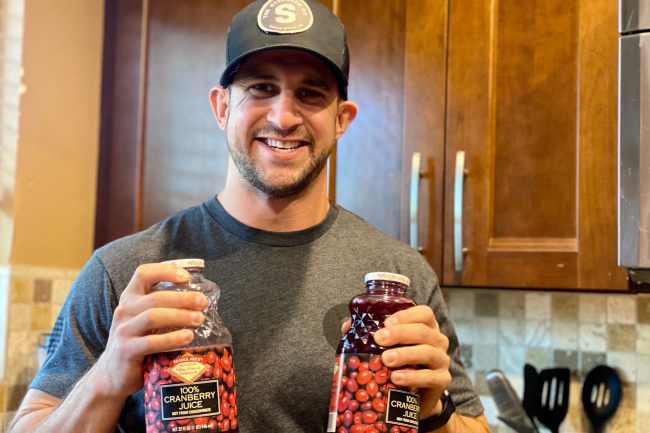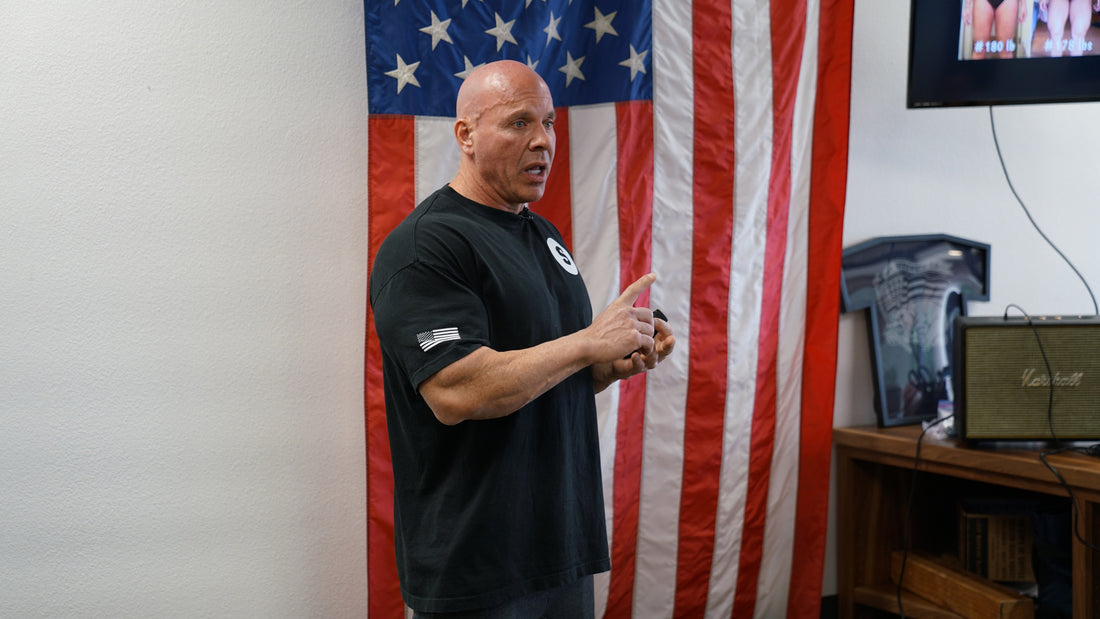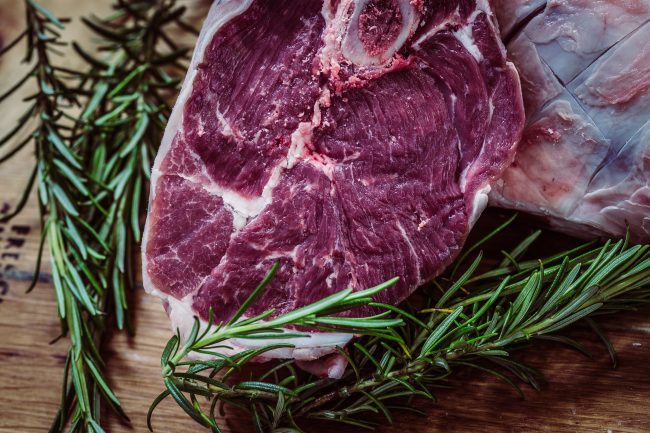The Road To Vertical
I recently attended and coached at a seminar with Stan Efferding at The Strength Co. Stan’s accomplishments have always amazed me - he is a former Mr. Olympia and also held Powerlifting world records. He coaches many top strength athletes around the world, including Hafþór “The Mountain” Björnsson.
It is clear he knows what he’s doing. So what can we learn from him? As a former bodybuilder, Stan is someone who understands diet for aesthetics. As a former powerlifter, he also understands the calculus of adapting the diet for performance - he holds not just one, but two world records in Powerlifting.
As a barbell coach and powerlifter, I have tested many diet styles for strength gain. Most strategies involved eating more, but I have felt like much of the time, I was experimenting randomly, without as much of a plan as I would like.
When I first started lifting I took my bodyweight from 175lbs to 240lbs in about 8 months. I was consuming 5000-6000 cals and it worked; I got really strong. My most recent objective was to lower my body weight while getting stronger.
I did a lot of fasting, carb cycling and zone dieting. You name it, I probably tried it. I knew if I didn’t feel great gaining the weight, I most likely wasn’t going to feel great losing the weight either. While working to get my body fat down, it became much more difficult to follow my lifting program and I struggled under my normal weights.
Low carb days made me feel sluggish and high carb days left me bloated and lethargic. Nobody would notice if I took a quick nap in the gym, right? I persisted mostly in the kitchen and the gym and worked my bodyweight down to 196lbs and 7% body fat. It was a lot of work.
Switching to eating with Vertical Diet has helped me find a balance. I am now able to eat meals that taste good. Now I rarely feel sluggish or bloated and I’ve managed to maintain my strength, even with the lower body fat.

Deadlifting at my last meet.
After listening to Stan’s lecture for a few hours one Sunday afternoon (and taking a few 10 minute walks), my diet habits have permanently been converted. Here are my takeaways:
What is the Vertical Diet?
The Vertical Diet is a diet program created by Stan Efferding that focuses on eating nutrient dense foods that are easy to digest and will help you reach your athletic goals.
On the Vertical Diet, sleep is a big priority. Before dietary modifications, Stan recommends optimizing your sleep for maximizing your training and health. And the quality of sleep is important! Stan recommends 6-8 hours of sleep per night, with as few interruptions as possible - so take every measure to not use the bathroom, get up in the middle of the night, etc.
Taking a nap during the day is not as good for recovery as a full night’s sleep, but if you do need a nap, it should help your recovery. Side note: If you find yourself waking up tired and staying tired throughout the day, you might want to have a sleep study done. This might rule out things such as sleep apnea, which is a fairly common problem. Treating sleep apnea could be the best change you make to your diet and training.

My lunch today.
What to Eat
The Vertical Diet focuses on nutritionally dense foods that cause very little, if any bloating. The foods encouraged on this diet are not only rich in macronutrients, but also mostly come from unprocessed, whole sourced ingredients that are intended to help digestibility. I have personally found that eating a Vertical Diet has left me feeling less fatigued and lethargic after eating.
The Vertical Diet was also designed to be sustainable and enable optimized performance. Many people can handle a restricted diet such as Keto, Paleo, low carb, etc, for months, but it is unlikely they’ll be able to maintain such a strict diet for a long period of time. Many people on these diets lose weight initially, but often gain back weight after their initial success.
“The best diet is the one you will follow,” Stan says. If you hate the diet, it will never work long term. This is why he encourages people to find a diet that works best for their preferences, lifestyle, and continue with that.
Let’s Talk About Calories
“Calories in, calories out” is the best method for gaining, losing or maintaining weight. Stan encourages finding out how many calories you need per day and adjust accordingly. This will result in desired weight loss or gain. I recommend MyFitness Pal to most of the people I coach. It is a useful app that can help you track calories easily. Stan encourages you to do this for a few weeks, while tracking your weight daily and adjusting your total caloric intake accordingly.
When Do I Eat?
As long as the calories are the same, whether you eat 6 meals a day or 2 meals a day, it will yield the same benefits. The timing of the meals is not important on the Vertical Diet. Intermittent fasting and other time restrictive eating habits do not have increased benefits compared to normally spaced out meals.
If fasting or a certain time restrictive diet helps you manage overall calorie intake, it can be effective, but overall, the timing of your meals is not a critical part of this diet.
How Much Protein, Stan?
Selecting the best foods to eat should be based on micronutrient availability after your calories are set. Stan recommends 0.8-1.2 grams of protein per pound of body weight, 0.4-.0.7 grams of fat per pound of bodyweight and 1-2 grams of carbs per pound of body weight.
The protein should not get too high on a diet if a lifter is trying to gain weight. Instead, carbs should be the variable that are increased and manipulated. And make sure you are getting enough protein! When protein intake gets too low on a diet where a lifter is trying to lose weight, the fat/carbs should also be reduced to the lower end of the range. This will help put the lifter in a caloric deficit.
How Much Red Meat?
On the Vertical Diet, and overall, red meat is the best source of protein. The high bioavailability of vitamins such as A, B-12 and minerals such as iron and creatine make it superior to chicken, fish, and other common animal sources of protein.
Eggs are important (yolks included!) for essential vitamins and minerals. Stan also encourages people on the Vertical Diet, especially lifters, to have 2 servings of salmon (wild caught) per week to get adequate Omega-3s. Eating this way will give you all of the micro/macronutrients you will need. No further supplementation should be necessary.
Best Carb Sources
Stan recommends white rice as the best source of carbs for lifters. Rice digests quickly and has plenty of minerals. It is also quick to prepare and stores well for meal preps. Stan also recommends white rice over brown rice. Brown rice and other whole grain forms of carbs can cause a lot of bloating and be difficult to digest.
Best Veggie Sources
Stan focuses on a diet that is non-bloating and contains a relatively low fiber content. His recommended vegetables include: bell peppers, carrots, sweet potatoes and leafy greens like spinach and bok choy. This is not to say other veggies are bad, but these are some of the easiest to digest vegetables that have a high micronutrient content.
Fruits are also an excellent source of vitamins such as vitamin C, and they are rich in antioxidants. Fruits and vegetables can account for a majority of a person's fiber intake on the Vertical Diet.
Don’t Forget the Salt
Salt is an essential electrolyte in the human body. It plays an important role in regulating muscle contractions, aiding in nerve function and helping control blood volume. When we train, we tend to lose a lot of electrolytes, so replenishing them is vital for training.
Iodine is a common essential nutrient that many people are deficient in. People suffering from certain metabolic problems may benefit from increasing their iodine consumption.
The Vertical Diet preaches, unless you suffer from a salt sensitive hypertension medical problem, that you should be salting all of your food and even consuming extra salt before and after working out. So add a little salt to your water before a workout and see what happens. It might give you that extra boost you need to power through your work sets! Focusing on a “balanced diet” allows the body to function properly with the adequate micronutrients found in food.
Stan recommends another easy solution to this. You can get +300% of your daily recommended dose of iodine by simply having 3 oz of cranberry juice (not from concentrate) in the morning. Cranberry juice is a great source of iodine and is rich in antioxidants. Stan recommends having it in the morning too, as having it too close to bedtime may affect your sleep.

My pre-workout.
My Eating Habits
I currently eat 3-4 “Vertical” meals a day. I find the shopping for the ingredients simple and I can buy everything I need at Costco. I save time and money each day having all my food prepared in the fridge or freezer waiting for me. A crock pot has helped a lot too.

Meal Prep
I also travel with 1-2 thermos per day to keep my food with me so I never miss lunch, or have to spend money going out to buy food on the road that I know won’t help me hit my macros. The simplicity of the diet has simplified my lifestyle when it comes to food.
In the gym I have continued to deadlift 600+ and have been maintaining a body fat of less than 10% with not much stress about what to eat or not eat. Attending the Efferding seminar has improved my lifts, diet, and life more than I could have ever imagined. I am starting to help some of the people I coach start on the Vertical Diet. So far, they seem to like the results of the diet as much as I do.
Give Vertical A Try
Stan’s approach in the Vertical Diet for a macronutrient dense, low bloating, red meat filled diet is an easy way to lose, gain or maintain your weight, and it’s easy to follow unlike other diets that may cause a lot of restriction. Update: Lots of readers have tons of questions about The Vertical Diet. We highly recommend going straight to the source: The Vertical Diet eBook. It has the answers to ALL of your questions and contains all the recommendations you need to dial in your diet.
If you are looking for both training and nutrition advice, our coaches offer online consults.


